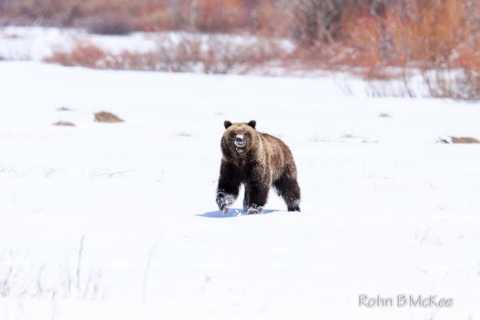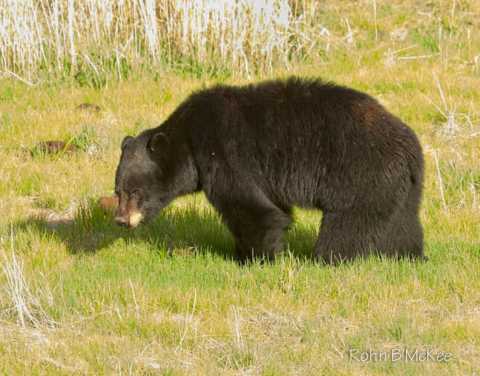Jackson Hole Wildlife Part 2: Grizzly Bears

Welcome to part 2 of our series about Jackson Hole wildlife. Today’s featured critter is the one you’re probably the least likely to want to run into while on a nice nature walk. Luckily, no hikers were harmed in the making of this blog post. Read Part 1 here.
[caption id="attachment_1501" align="aligncenter" width="480"] Little known fact: The size of the bear on your screen is a bear's actual size. Just kidding.[/caption]
Latin name: Ursus arctos horriblis
Little known fact: The size of the bear on your screen is a bear's actual size. Just kidding.[/caption]
Latin name: Ursus arctos horriblis
 This bear is bear-ly hanging in there. (Again, our deepest apologies.)[/caption]
Thanks for reading! If you’re thinking of getting in on the bear hunt, make Flat Creek Inn your home base. And stay tuned for part 3 of our Jackson Hole wildlife series.
This bear is bear-ly hanging in there. (Again, our deepest apologies.)[/caption]
Thanks for reading! If you’re thinking of getting in on the bear hunt, make Flat Creek Inn your home base. And stay tuned for part 3 of our Jackson Hole wildlife series.
 Little known fact: The size of the bear on your screen is a bear's actual size. Just kidding.[/caption]
Latin name: Ursus arctos horriblis
Little known fact: The size of the bear on your screen is a bear's actual size. Just kidding.[/caption]
Latin name: Ursus arctos horriblis
What’s the difference between a grizzly and a brown bear?
It’s subtle. Brown bears and grizzly bears are technically the same species. The grizzly is a subspecies of brown bear that tends to live inland.What do they look like?
You can know a grizzly by its distinctive shoulder hump and short, rounded ears. They can weigh in at up to 600 pounds. Black bears are smaller, weighing only 200 pounds, and they lack the shoulder hump. Their ears are tall and pointed.What do they eat?
Grizzlies are opportunistic omnivores (but we don’t judge them for their lifestyle choices). That means they eat berries, grass, insects, and fish, as well as young elk, deer, and bison.Where can I see them around Jackson?
You might spot a grizzly around Willow Flats or Oxbow Bend. You can see black bears around Signal Mountain and Jenny Lake in the summer, or along the Moose Wilson Road, which runs along the east side of the Tetons. Bear in mind (we’re really sorry about that) that that you SHOULD NOT approach these animals. Really.Are they endangered?
“Threatened” was the term listed by the Endangered Species Act—until last year, when they were removed from the list.How long do they live?
25 years in the wild.How fast can they run?
Up to 30 miles to hour. So before you think you can outrun them, don’t. They have a very particular set of skills, and they will catch you.Can I hunt them?
Soon, yes—until the number of bears in the ecosystem drops below 600. Licenses will cost $600 for residents and $6000 for non-residents. Sows with cubs are will be exempted.What else should I know about them?
Grizzly bears eat up to 90 pounds of food per day, which partially explains why they don’t make good roommates. That’s equal to about 360 McDonald’s quarter pounders (which, as a side note, are even worse for bears than they are for people, so don’t feed the bears). The grizzly’s shoulder hump is all muscle. It’s used for digging winter dens and tearing through the earth in search of roots and anything they can eat. Over the winter, females can lose about 40% of their body weight. They probably have really good personal trainers.Read this:
Again, do not feed or approach bears! Read more. [caption id="attachment_1502" align="aligncenter" width="480"] This bear is bear-ly hanging in there. (Again, our deepest apologies.)[/caption]
Thanks for reading! If you’re thinking of getting in on the bear hunt, make Flat Creek Inn your home base. And stay tuned for part 3 of our Jackson Hole wildlife series.
This bear is bear-ly hanging in there. (Again, our deepest apologies.)[/caption]
Thanks for reading! If you’re thinking of getting in on the bear hunt, make Flat Creek Inn your home base. And stay tuned for part 3 of our Jackson Hole wildlife series. 
